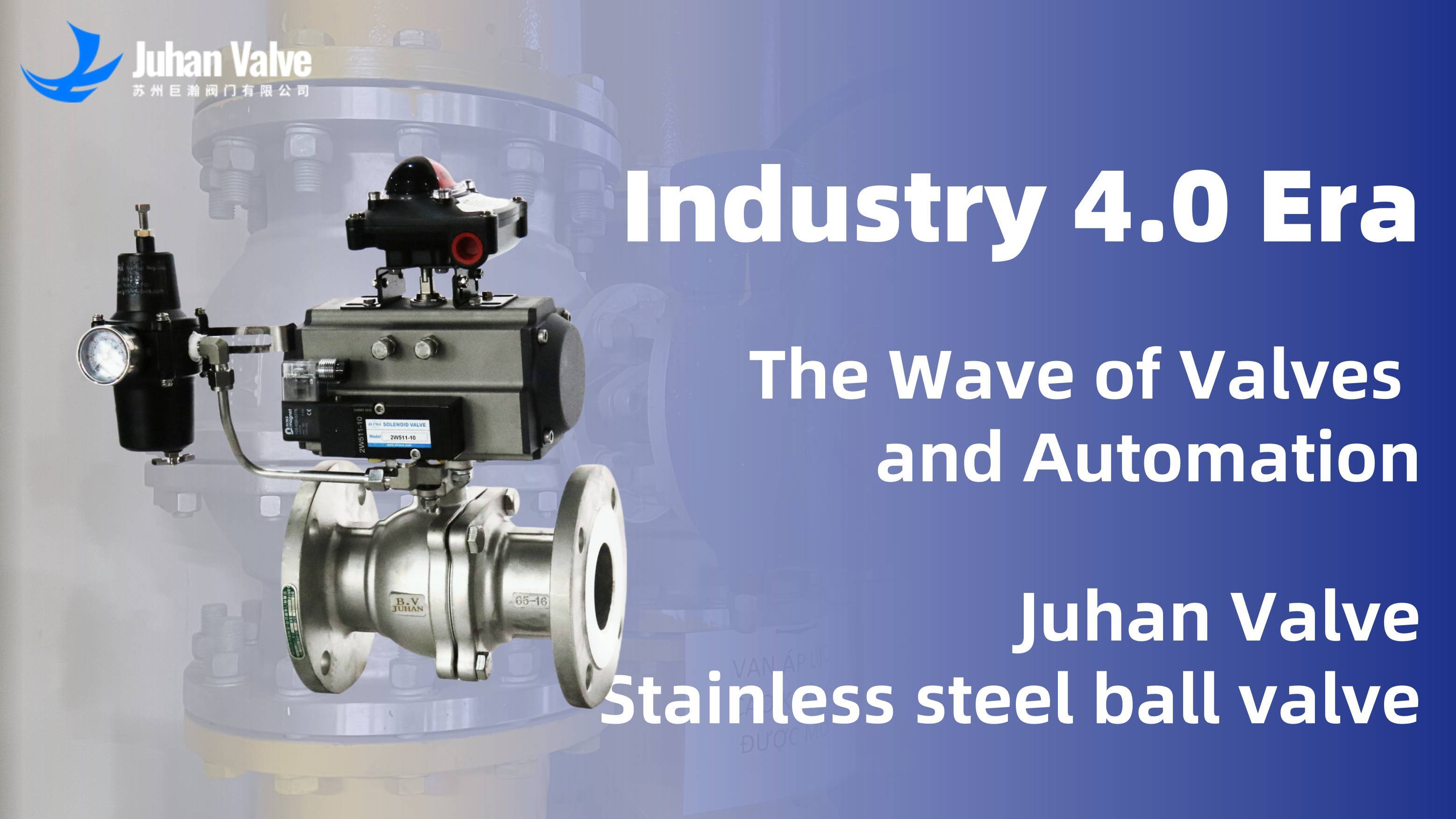Industry 4.0 Era The Wave of Valves and Automation
Deepseek and ChatGPT have now become household names. With the rapid development of Artificial Intelligence and the Internet of Things, the world is quickly advancing toward a new era of full automation. This trend is not only driving the intelligent upgrading of manufacturing but is also accelerating the automation transformation of municipal infrastructure.

In the era of Industry 4.0, infrastructure upgrades have become a key focus. Valves, as an important component in automation control, are being widely adopted across industries. By upgrading industrial valve systems, companies can optimize production processes, reduce resource waste, lower operational costs, and respond proactively to environmental demands.
Valves are mechanical devices used to control the flow of fluids such as liquids, gases, or steam, and are extensively used in industries like petroleum, chemicals, power, metallurgy, water treatment, and municipal water supply. Their main functions include: opening and closing fluid flow, regulating flow rates, controlling pressure, and preventing backflow.
Common types of valves include gate valves, butterfly valves, globe valves, ball valves, check valves, and control valves.
Applications of Valves in the Automation Process
Data Centers
Automation Monitoring:
Data centers typically handle vast amounts of servers and equipment, and automated systems are used to monitor key indicators such as temperature, humidity, power consumption, and network traffic, ensuring devices run at optimal levels.
Role of Valves:
- Cooling System Control: Regulate the flow of cooling water to maintain optimal temperatures for server equipment.
- Pipeline Flow Management: Adjust the flow of cooling fluid to enhance energy efficiency and reduce waste.
- Emergency Pressure Relief: Prevent pipe bursts or equipment damage caused by water hammer effects, ensuring system stability.
Common Valves:
- Electric butterfly valves (for controlling cooling water flow)
- Ball valves (for precisely regulating cooling fluid flow)
- Check valves (to prevent backflow of cooling liquid)
Biological Engineering
Production Process Automation:
In biopharmaceutical production, such as vaccine manufacturing, automated control systems can precisely regulate parameters like temperature, humidity, and pressure, ensuring stable conditions for bioreactors.
Role of Valves:
- Precise Fluid Control: High-precision valves are used to stabilize experimental or production processes, with flow errors generally controlled within ±0.1%.
- Hygienic Standards Control: FDA or GMP-certified valves ensure a sterile environment.
- Maintaining Sterile Conditions: Precisely control nutrients, solvents, gases, and other fluids to maintain bioreactor stability.
Common Valves:
- Diaphragm valves (for sterile pipelines, preventing contamination)
- Stainless steel ball valves (corrosion-resistant, easy to clean)
- Precision control valves (for microfluidic control)
High-Tech Semiconductor Electronics Plants
Precise Environmental Control:
Semiconductor manufacturing requires highly controlled environmental conditions. Automated systems adjust temperature, humidity, and air quality to meet stringent production environment standards.
Role of Valves:
- Ultrapure Water Supply: Precisely control water flow to maintain production line cleanliness.
- Chemical Transport Control: Corrosion-resistant valves prevent leaks, ensuring safety.
- Gas Transport Regulation: Precisely control the flow of inert gases, corrosive gases, or plasma gases.
Common Valves:
- PTFE-lined valves (for chemical transport)
- Pneumatic diaphragm valves (for precise chemical flow control)
- High-vacuum valves (for vacuum environments)
Municipal Water Supply
Atomated Water Treatment Systems:
Automated systems monitor water supply networks in real-time, quickly detecting issues like leaks or blockages, and automatically adjusting flow to reduce water waste. The systems also monitor water quality, flow, and chemical composition to ensure water standards are met.
Role of Valves:
- Water Pressure Regulation and Flow Control: Adjust municipal water pressure to maintain stable and balanced supply.
- Pressure Relief and Backflow Prevention: Prevent contamination from backflow and release pressure to protect the pipeline.
- Remote Intelligent Control: Integrated with IoT technology for remote management.
Common Valves:
- Hydraulic control valves (for automatically adjusting network pressure)
- Smart solenoid valves (for remote control of water supply)
- Check valves (to prevent water backflow and contamination)
Urban Construction
Smart Building Management:
Automation systems manage energy usage, temperature regulation, lighting control, and security surveillance in buildings, optimizing resource use and improving energy efficiency and comfort. By integrating Building Information Modeling (BIM) technology, building automation and maintenance operations are streamlined.
Role of Valves:
- HVAC Systems: Control the flow of heating and cooling water to enhance energy efficiency.
- Wastewater Treatment and Rainwater Recycling: Ensure environmentally compliant discharge.
- Fire Safety Systems: Ensure the reliable operation of sprinkler systems.
Common Valves:
- Electric butterfly valves (for automatic HVAC control)
- Filter + gate valves (for wastewater treatment)
- Signal butterfly valves (for fire safety systems, remote monitoring)
International Development of China’s Valve Industry
The valve industry in China has evolved from a weak foundation to independent innovation and global competition. In the early years of the People's Republic, valve manufacturing relied heavily on imports. After the reform and opening-up, a large number of private enterprises emerged, introducing technologies from Europe, the US, and Japan, and gradually developing their own research capabilities.
With increasing demand for environmental protection and energy-saving technologies, Chinese valve manufacturers have invested more in R&D, pushing the industry toward high-end manufacturing. In this trend, companies like Juhan Valve have entered the high-end market with durable, high-quality manufacturing technology and are competing with international brands in certain sectors.
Currently, domestic valves have gained a certain level of international competitiveness. The future direction of the industry will focus on smart manufacturing, environmental technologies, and brand globalization to further enhance market share globally.
Latest news






